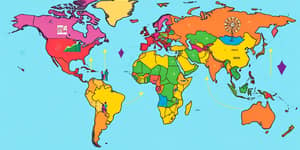
In 2025, economies around the world are witnessing uneven global policy landscape as inflation paths diverge. Once synchronized in their pandemic-era interventions, major central banks have now split into distinct camps. This fragmentation influences everything from exchange rates to investor strategies and corporate planning. Understanding these shifts is crucial for businesses, policymakers, and individuals alike.
While some regions ease policy to stimulate growth, others maintain tight stances to tame price pressures. Navigating these waters requires insights into each central bank’s motivations and the macro trends that drive them.
Inflation divergence stems from multiple factors. Supply chain disruptions, residual effects of pandemic-era spending, and geopolitical tensions have created persistently elevated inflation pressures in some countries. In contrast, regions with slower demand growth or stronger cost-push relief experience quicker disinflation.
Key drivers include:
These factors have combined to produce inflation readings ranging from near-target in Japan and Canada to stubbornly high in the United States.
Central banks are tailoring actions to domestic realities, yielding a patchwork of policy decisions. Some are keeping rates elevated, others have begun to ease, and a few remain on hold.
Below is a snapshot of major economies’ benchmark rates as of May 2025:
In the United States, the Fed remains cautious. With a strong labor market and inflation expectations around 3%, officials have signaled only minor cuts later in the year. Conversely, the ECB and BoE have taken the first steps toward easing, driven by slowing growth and softer price pressures.
Japan, after decades of battling deflation, holds rates steady to foster mild inflation, while Canada adopts a wait-and-see stance amid mixed economic signals.
Divergent policies ripple through global markets, shaping currency valuations, bond yields, and equity flows. A robust U.S. dollar reflects the Fed’s hawkish tilt, while diminishing interest rate differentials may weigh on the euro and pound.
For corporate treasurers, dynamics of trade and capital flows demand close monitoring. Hedging strategies may need adjustment as volatility rises and liquidity ebbs.
Central banks face a delicate balance: cut too swiftly and risk reigniting inflation; hold too long and choke off growth. Geopolitical flashpoints—renewed tariff impositions, supply chain disruptions, or energy shocks—could force sudden pivots.
Key macro-risks include:
Financial markets must also reckon with potential coordination failures among central banks, which could amplify volatility and test institutional credibility.
Businesses and investors can take proactive steps to weather policy divergence and market turbulence. Consider these approaches:
Long-term investors should also reassess portfolio duration and credit risk profiles, aligning allocations with evolving monetary backdrops.
Inflation divergence in 2025 underscores the complexity of post-pandemic normalization. Central banks are crafting bespoke policies to match their economic landscapes, creating both challenges and opportunities.
By understanding each institution’s priorities—whether balancing growth support and stability or guarding against upside inflation risks—market participants can devise strategies to thrive amid uncertainty.
In an era of split policy paths, staying informed and adaptable remains the surest way to navigate evolving economies and safeguard financial resilience.
References













